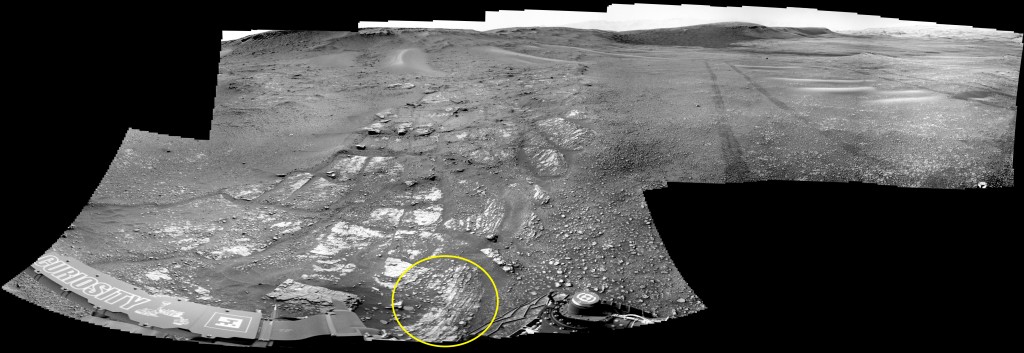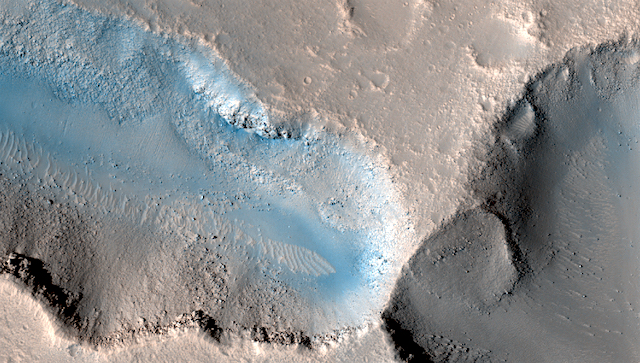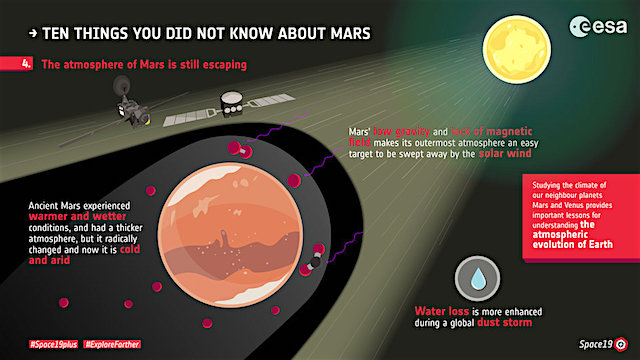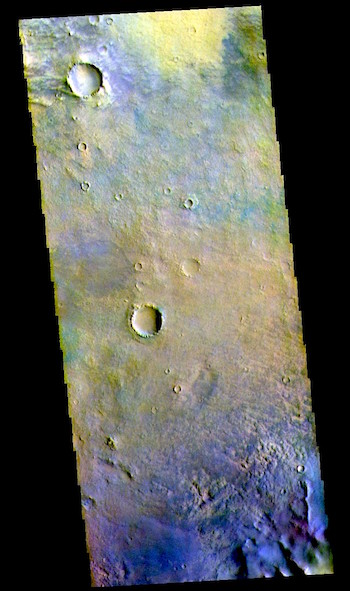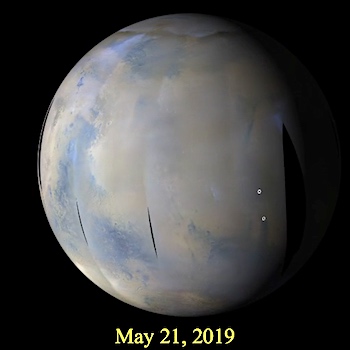 Last week on Mars, water ice clouds and small dust-lifting events continued to be observed along the retreating seasonal north polar ice cap edge. Near the end of the week, larger pulses of dust activity were spotted over the plains of Arcadia and Acidalia. Dusty conditions persisted for many areas of the southern hemisphere as short-lived dust storms cropped up along the margins of the developing south polar hood… [More at link, including video]
Last week on Mars, water ice clouds and small dust-lifting events continued to be observed along the retreating seasonal north polar ice cap edge. Near the end of the week, larger pulses of dust activity were spotted over the plains of Arcadia and Acidalia. Dusty conditions persisted for many areas of the southern hemisphere as short-lived dust storms cropped up along the margins of the developing south polar hood… [More at link, including video]
-
Recent Posts
Archives
Links
general
mission instruments
- CRISM: Compact Reconnaissance Imaging Spectrometer for Mars
- CTX: Context Camera
- HiRISE: High Resolution Imaging Science Experiment
- MARSIS: Mars Advanced Radar for Subsurface and Ionosphere Sounding
- SHARAD: Shallow Radar
- THEMIS: Thermal Emission Imaging System
missions
- All Mars missions list
- Curiosity rover
- ExoMars
- Hope (al-Amal) orbiter
- InSight
- Mars Atmosphere and Volatile Evolution Mission (MAVEN)
- Mars Exploration Rovers (MER)
- Mars Express (MEX)
- Mars Odyssey
- Mars Orbiter Mission (MOM) / Mangalyaan
- Mars Reconnaissance Orbiter (MRO)
- Mars Science Laboratory (MSL)
- Perseverance Rover
- Tianwen-1 orbiter/rover
news









